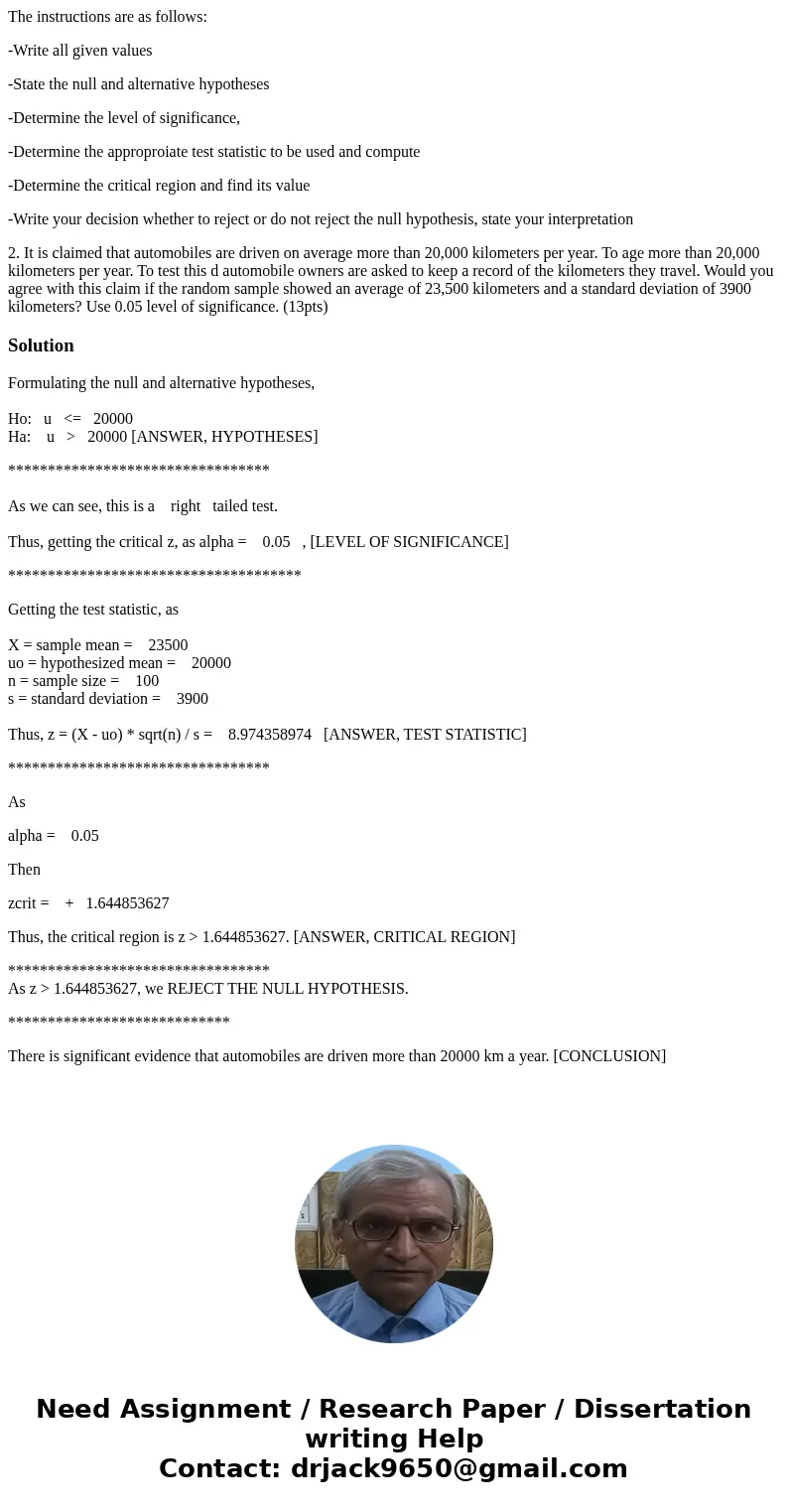The instructions are as follows Write all given values State
The instructions are as follows:
-Write all given values
-State the null and alternative hypotheses
-Determine the level of significance,
-Determine the approproiate test statistic to be used and compute
-Determine the critical region and find its value
-Write your decision whether to reject or do not reject the null hypothesis, state your interpretation
2. It is claimed that automobiles are driven on average more than 20,000 kilometers per year. To age more than 20,000 kilometers per year. To test this d automobile owners are asked to keep a record of the kilometers they travel. Would you agree with this claim if the random sample showed an average of 23,500 kilometers and a standard deviation of 3900 kilometers? Use 0.05 level of significance. (13pts)Solution
Formulating the null and alternative hypotheses,
Ho: u <= 20000
Ha: u > 20000 [ANSWER, HYPOTHESES]
*********************************
As we can see, this is a right tailed test.
Thus, getting the critical z, as alpha = 0.05 , [LEVEL OF SIGNIFICANCE]
*************************************
Getting the test statistic, as
X = sample mean = 23500
uo = hypothesized mean = 20000
n = sample size = 100
s = standard deviation = 3900
Thus, z = (X - uo) * sqrt(n) / s = 8.974358974 [ANSWER, TEST STATISTIC]
*********************************
As
alpha = 0.05
Then
zcrit = + 1.644853627
Thus, the critical region is z > 1.644853627. [ANSWER, CRITICAL REGION]
*********************************
As z > 1.644853627, we REJECT THE NULL HYPOTHESIS.
****************************
There is significant evidence that automobiles are driven more than 20000 km a year. [CONCLUSION]

 Homework Sourse
Homework Sourse